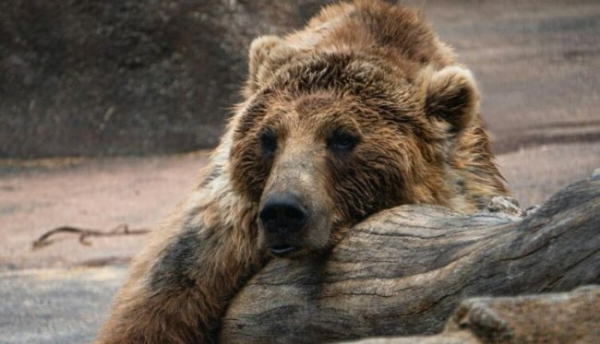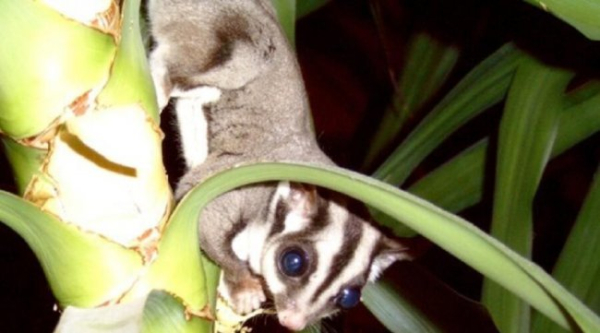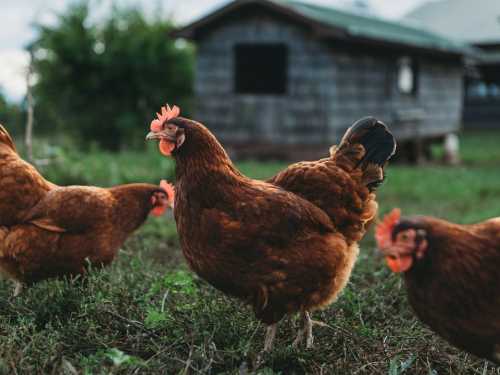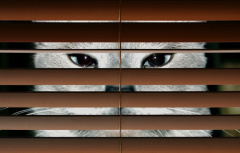
On the surface, there are two different ways to survive the winter. A bear lies down in its den and “lowers the sound” of its body to a whisper. A frog from the northern forests sometimes goes even further: not just slowing down, but entering a state akin to a pause in life itself—suspended animation, when parts of the body can freeze and the heart stops for hours.
These seem like opposing strategies: one is about warm darkness and slow exchange, the other about cold and almost complete shutdown. But a closer look reveals that both strategies are based on the same principle: life doesn't have to fight the world head-on—it can change its operating mode, adapting itself and its connections to seasonal shortages.
Hibernation is a contract the body makes with itself: we temporarily conserve, redistribute, and recycle. Suspended animation is a contract with the external environment: we accept the cold as a tool, not a threat, protect our cells with antifreeze, and wait it out in stillness. And in both cases, the goal is the same: not to defeat winter, but to survive until spring intact.
How a bear “mutes” itself
A bear's wintering is not a dream in the ordinary sense, but a carefully orchestrated restructuring.
The heart rate drops, breathing becomes rare and shallow, body temperature drops slightly, and metabolism switches to lipid nutrition: the body lives off fat reserves, obtaining from them not only energy but also water.
The kidneys and intestines switch to energy-saving mode: metabolic waste is processed and reused, so as not to waste energy or water. Contrary to expectations, muscles hardly melt—amino acids are “recycled,” and bone tissue maintains its strength.
The behavioral dimension is also important: the bear doesn't search for food, doesn't defend territory, and doesn't waste itself on competition. It eliminates all unnecessary elements from the equation.
The logic of hibernation is not to pull the rope with the frost, but to narrow the needs to a level that winter can tolerate.
How a frog “stops the clock”
Some frogs in northern latitudes, when the temperature drops sharply, enter a state called suspended animation: the body is immobilized, metabolism drops to a minimum, blood flow is redistributed, and breathing may temporarily cease.
The most astonishing aspect is the way the water works in the tissues: to prevent the ice from rupturing the cells, the body increases the concentration of sugars and alcohols, which act as natural cryoprotectants. The ice forms not inside the cells, but in the intercellular spaces, and the cells themselves “shrink” without causing critical damage.
In the spring, when the warmth returns, the moisture balance is restored, metabolism awakens, the heart begins to beat again – and life “goes on, as if you had simply closed the book at night.”
The general algorithm: not heroism, but precision engineering
Leaving aside specific techniques, hibernation and suspended animation share a common framework:
- Cost reduction. The bear reduces energy and water consumption, the frog slows down its reaction speed to a barely noticeable level. In both cases, the body is telling the world, “I need very little.”
- Protection from damage. For a bear, this means maintaining muscles and bones without strain, and carefully handling metabolic products. For a frog, this means protecting cells from ice crystals through antifreeze and careful moisture distribution. The goal is the same: to survive without breaking.
- Reversibility. Both hibernation and suspended animation are modes, not entities. They can be switched on and off: when the environment becomes favorable, the system reverses without losing its integrity.
- Abandoning head-on competition. No one is trying to “beat the winter.” Strategy isn't a feat, but careful optimization: eliminate expense items, fix vulnerabilities, and wait it out.
The body as a laboratory of economy
The bear has an internal “economic headquarters”—hormones, a nervous system, circadian mechanisms. They simultaneously extinguish their “lights” and maintain balance, lest they fall into a dangerous pit. It's like a city under curfew: traffic is minimal, but the infrastructure doesn't die—it waits.
The frog's laboratory expands beyond its body: soil moisture, microrelief, driftwood, and leaf litter are all part of the structure of suspended animation. A well-placed burrow or layer of silt is as much a safety feature as glucose in the blood. The environment becomes an accomplice, not an adversary: if you lie down correctly, the world itself will help you stay afloat.
Why does nature need two different “pauses”? Because winter isn't the same for everyone.
A large animal has many internal reservoirs:
- fat;
- blood volume;
- protein reserve;
- large liver.
He can afford a long “economic winter” without a complete shutdown.
A small amphibian is a different scale and different physics . Heat escapes quickly, and it's impossible to carry much of its reserves. Therefore, its response is more radical: to penetrate the ice without breaking.
Different body shapes, different thermal laws, but the principle is the same: to fit into the limitations so skillfully that the limitations cease to be a death sentence.
What does this teach a person?
We don't really hibernate and we don't know how to preserve ourselves in ice, but we have similar tools—organizational and psychological.
- During “seasons of shortage,” you can switch projects to a slower pace, eliminate unnecessary activities, and maintain the “skeleton” of the system: relationships, skills, basic habits—the bear's path.
- And when the environment becomes suddenly and permanently impoverished, the “frog” approach comes to the rescue: preserve the core, protect the vulnerable (sleep, health, warm connections), accept external conditions as a given, without breaking yourself over them.
And one more thing: both strategies only work if resources have been collected in advance. A bear doesn't go into its den hungry. A frog won't survive without the right antifreeze.
- For humans, this means: in warm seasons, accumulating the fat of meaning, skills, and relationships; in cold seasons, using them carefully.
A bear's hibernation and a frog's suspended animation are two voices in the same melody: the ability to switch between life modes when the external environment dictates strict rules. In some cases, it's enough to turn down the volume and wait in a warm place; in others, you need to stop the music almost completely, only to resume on the same note. Both methods forego a heroic attack; both rely on fine-tuning—physiological and behavioral.
If we were to boil down the general idea into a single formula, it would be this: life survives not by the force of constant pressure, but by the flexibility of switching. At the right moment, slow down; at a critical moment, conserve; when the light returns, turn around and move on. There's no pathos or tragedy in this. There's practical reason, with which nature has negotiated with winter for many millions of years—and each time, it emerges alive.





